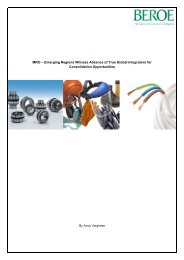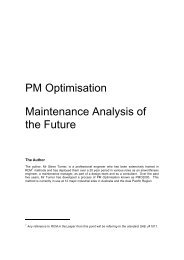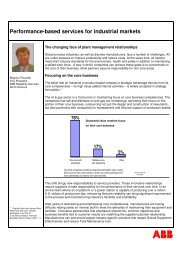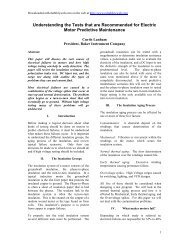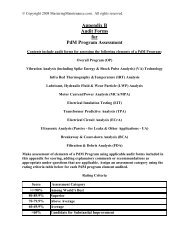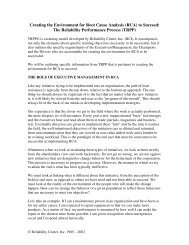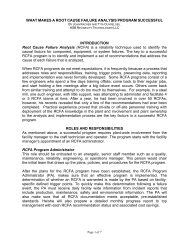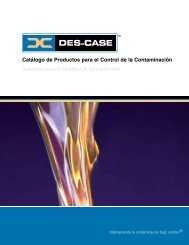Effective Maintenance Program Development/Optimization
Effective Maintenance Program Development/Optimization
Effective Maintenance Program Development/Optimization
You also want an ePaper? Increase the reach of your titles
YUMPU automatically turns print PDFs into web optimized ePapers that Google loves.
Downloaded from Reliabilityweb.com on the web at http://www.reliabilityweb.com‣ Customer Service.‣ Operating Cost.Each criterion is given a maximum score to reflect the consequences and relativeimportance. In Table 1, the safety criterion is given a maximum score of twenty (20)while operating cost criterion is given a maximum score of ten (10).5.2 Failure ConsequencesFailure consequences within each criterion are defined and given an evaluation score.Table 2 provides examples of safety, throughput/downtime, product quality, maintenanceand operating cost criteria and their associated consequences of failure and their scores.5.3 Failure FrequenciesFailure frequencies are defined based on systems and equipment performance. Whendefining failure frequencies, consideration is given to aspects such as:‣ Operational failure history (where available).‣ Generic reliability data.‣ Equipment redundancy.‣ Mode of equipment operation.‣ Equipment stress variations, etc.The frequency of failure score is used in the calculation of relative risk to determine howlikely the failure of the assessed system or equipment item will impact an organization’sbusiness. Table 3 shows a sample of frequency scores.5.4 Criticality Ranks and RulesThe criticality rank number of a system or equipment is a function of the system’s orequipment’s impact on the business when the system or equipment fails, regardless ofhow often the failure occurs. For example, a set of criticality ranking numbers mightrange from 1 to 10. Criticality rank number 10 represents the highest rank while number1 represents the lowest.Criticality ranking rules are defined to assist in assigning criticality ranks to systems orequipment during the analysis. The rules are established by considering the combinedconsequence scores for all assessment criteria. For example, a rule can be defined as“Assign criticality of 10 to a system/equipment, if any of safety or environmentalconsequence scores are greater than 18, or any of throughput, product quality ormaintenance and operating cost consequence scores are equal to 10”, and so forth.Page 5



